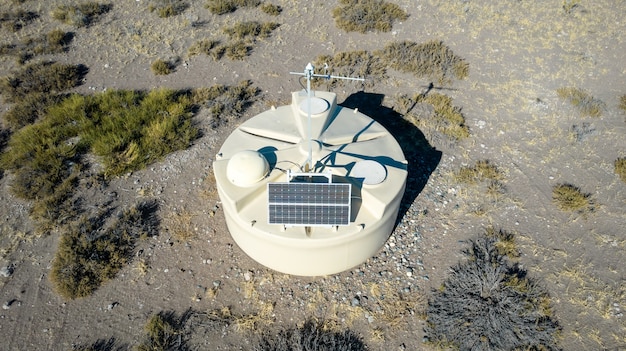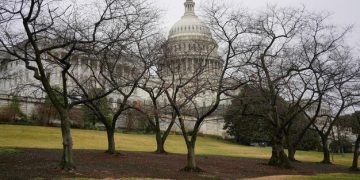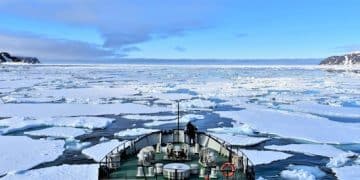US Foreign Policy & Climate Change: Rejoining Paris Agreement Impact

US Foreign Policy and Climate Change are intertwined, especially when considering the implications of the United States rejoining the Paris Agreement, which signals a renewed commitment to global climate action and affects international relations.
The United States’ role in global climate policy has been a topic of much discussion, especially concerning its approach to international agreements. The decision to rejoin the Paris Agreement signifies a pivotal shift in US Foreign Policy and Climate Change: Analyzing the Implications of Rejoining the Paris Agreement, suggesting a willingness to collaborate with other nations in addressing environmental challenges.
The Paris Agreement: A Foundation for Global Climate Action
The Paris Agreement stands as a landmark achievement in global climate governance. It sets the stage for coordinated international efforts to mitigate climate change. Understanding its core principles is crucial to grasping the implications of the United States’ renewed commitment.
The agreement’s framework emphasizes the reduction of greenhouse gas emissions and the pursuit of sustainable development. By examining its key components, one can better appreciate the United States’ role in achieving its objectives.
Key Objectives of the Paris Agreement
Here are the primary goals of the Paris Agreement, designed to limit global warming and foster climate resilience.
- Limit global temperature increase to well below 2 degrees Celsius above pre-industrial levels.
- Pursue efforts to limit the temperature increase to 1.5 degrees Celsius.
- Enhance adaptive capacity and resilience to climate change impacts.
- Promote climate finance flows consistent with a pathway towards low greenhouse gas emissions.

The Paris Agreement’s structure allows nations to set their own emissions reduction targets, known as Nationally Determined Contributions (NDCs). These commitments are reviewed and updated periodically, encouraging countries to enhance their ambitions over time. The agreement also emphasizes transparency, requiring nations to report on their progress in achieving their targets.
In conclusion, America’s decision to rejoin the Paris Agreement amplifies the global impetus to address climate change. By understanding the Paris agreement, the commitments and targets the US will need to aim for become more transparent.
Rejoining the Paris Agreement: A Shift in US Foreign Policy
The decision to rejoin the Paris Agreement reflects a significant change in US foreign policy priorities. This shift signals a renewed emphasis on multilateralism and international cooperation in addressing climate change. Here’s a look at how this shift impacts global collaboration.
Returning to the agreement demonstrates a commitment to working with other nations to achieve shared environmental goals. This move has profound implications for the United States’ diplomatic relationships and global influence.
Reasons for Rejoining the Agreement
Several factors motivated the United States’ decision to rejoin the Paris Agreement, highlighting the importance of climate action in its foreign policy agenda.
- Restoring US leadership on climate change globally.
- Aligning with international partners in pursuing emissions reduction targets.
- Promoting clean energy investments and innovation.
- Addressing domestic concerns about environmental sustainability.
The United States’ renewed commitment to the Paris Agreement strengthens its position as a leader in international climate negotiations. This move can help foster trust and collaboration with other nations, encouraging them to enhance their own climate commitments.
In conclusion, the decision by the U.S. to reenter the Paris Agreement re-establishes its active role in global climate action and bolsters international partnerships essential for tackling climate change.
Economic Implications of Climate Policy for the US
The United States’ climate policies have far-reaching economic implications, affecting various sectors and industries. This analysis examines the economic impacts of climate initiatives and explores potential opportunities for sustainable growth.
Understanding these economic dynamics is crucial for policymakers and businesses in navigating the transition to a low-carbon economy. The economic impact is both positive and negative, with adjustments to be made along the way.

Economic Opportunities in Renewable Energy
The transition to renewable energy sources presents significant economic opportunities for the United States, fostering innovation and job creation.
Investments in solar, wind, and other renewable technologies can drive economic growth. It also enhances the countries energy security and reduces reliance on fossil fuels.
- Job creation in renewable energy sectors.
- Innovation in clean energy technologies.
- Increased energy security and independence.
- Reduced healthcare costs due to improved air quality.
Furthermore, climate policies can stimulate private sector investments in green infrastructure and clean technologies. These investments can lead to the development of new industries and the creation of high-paying jobs.
In conclusion, the economic repercussions of US climate policies are varied, spanning from potential economic growth in renewable energy sectors to stimulating innovative clean technology investments, paving the way for a more fiscally stable and robust economy.
The Geopolitical Impact on International Relations
The United States’ climate policies have significant geopolitical implications, influencing its relationships with other nations. This section analyzes the geopolitical dynamics of climate diplomacy and explores the United States’ role in fostering international cooperation.
Understanding these geopolitical factors is essential for policymakers in shaping effective strategies for global climate action. International relations will be altered based on the US agreement into the Paris act.
US Leadership in Climate Diplomacy
Here are some of the ways the U.S. has taken a leadership role in climate diplomacy.
- Facilitating international climate negotiations and agreements.
- Providing financial and technical assistance to developing countries.
- Promoting collaboration on climate research and technology development.
It is also necessary to note that due to the re-entry into the agreement, there can be strengthened alliances with countries committed to reducing greenhouse gas emissions. It can also lead to potential conflicts with nations that still rely on fossil fuels.
In summary, the U.S. taking an active stance on climate issues has major effects on its global policy and interactions with other countries. This renewed commitment enhances its leadership and encourages greater international cooperation to combat climate change.
Challenges and Obstacles to US Climate Action
The United States faces various challenges and obstacles in implementing its climate policies effectively. This section examines these hurdles and explores potential strategies to overcome them.
Addressing these challenges is crucial for achieving long-term climate goals and ensuring a sustainable future. There are often external factors as well as internal factors.
Internal Political Opposition
Climate action in the United States often faces resistance from political factions that question the severity of climate change or oppose government intervention.
- Overcoming partisan divisions on climate policy.
- Addressing concerns about the economic impacts of climate regulations.
- Building consensus on long-term climate goals.
Beyond internal challenges, the United States must also navigate international dynamics. Ensuring that other nations are fulfilling their Paris Agreement commitments requires ongoing diplomatic efforts.
In conclusion, for the United States to progress in its climate action strategies, it must tackle both domestic political resistance and international cooperation issues. By overcoming these obstacles, the U.S. can ensure it meets its obligations and promotes global climate resilience.
Future Directions for US Foreign Policy on Climate
The future of US foreign policy on climate change holds significant potential and opportunities for transformative action. This section explores potential pathways for enhancing climate leadership and fostering global collaboration.
Strategic investments in renewable energy infrastructure and the development of sustainable technologies can enhance US competitiveness in the global market.
Enhancing International Cooperation
The success of US climate policy hinges on enhancing international cooperation and forging strong partnerships with other nations.
- Strengthening bilateral and multilateral climate agreements.
- Providing financial and technical support to developing countries.
- Promoting collaboration on climate research and technology transfer.
As the world moves towards a greener economy, the United States has the potential to lead in the development and deployment of innovative climate solutions. This includes investing in research and development, as well as creating incentives for businesses to adopt sustainable practices.
In summary, the direction of U.S. foreign policy concerning climate change presents significant prospects for pioneering change and strengthening international collaboration. By focusing on key strategies, the U.S. can enhance its leadership and advance global climate efforts.
| Key Point | Brief Description |
|---|---|
| 🌍 US Rejoining Paris Agreement | Signifies renewed commitment to global climate action and international cooperation. |
| 💰 Economic Opportunities | Investment in renewable energy drives job creation and innovation in clean technologies. |
| 🤝 Geopolitical Impact | Strengthens international relations and fosters climate diplomacy with other nations. |
| Obstacles Remain | Political opposition and ensuring global commitment affect climate action. |
FAQ
▼
The US rejoined to restore global climate leadership, align with international partners, promote clean energy investment, and address domestic environmental concerns. It was a significant shift in policy.
▼
Opportunities include job creation in renewable sectors, innovation in clean technologies, increased energy security, and reduced healthcare costs from improved air quality and environmental conditions.
▼
The climate policy strengthens U.S. alliances with nations committed to reducing emissions and may create friction with those heavily reliant on fossil fuels. Enhances international cooperation efforts.
▼
Challenges include overcoming internal political opposition concerning economic regulation effects and building consensus on long-term goals. There also needs to be maintained international compliance.
▼
Future directions involve enhancing bilateral and multilateral climate agreements, providing aid to developing countries, and promoting collaborative climate research and sustainable technology transfers for other countries.
Conclusion
In conclusion, the United States’ decision to rejoin the Paris Agreement signifies a pivotal step towards global climate action, with broad implications for its foreign policy, economy, and international relations. Embracing its role, the U.S. can lead global efforts towards a sustainable future.





